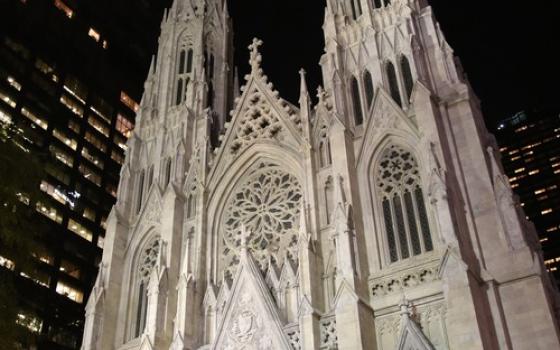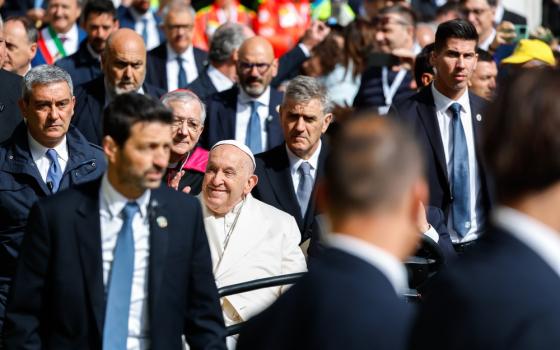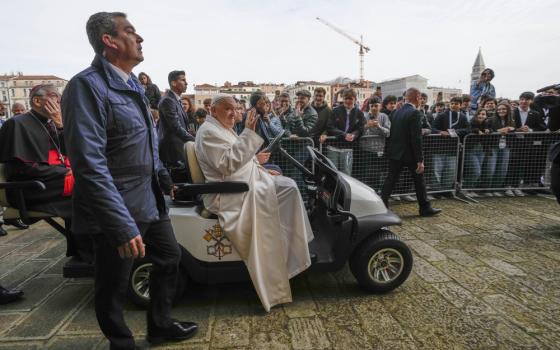It would be difficult to find two liturgical perspectives as different as the ones described in the two articles here and here. Yet they don't really need to be as at odds with each other as they are often portrayed.
The first article is a recollection of the guitar Mass days after Vatican II. I remember my first experience of a guitar Mass. At the time I was still pretty much in my conservative phase. I had recently cast my first presidential ballot for Barry Goldwater. I also tended to be irritated by any movement on the part of my fellow seminarians in a progressive direction. A few of the seminarians had started wearing round-neck surplices instead of the standard square-necked ones. I was annoyed. Others were not following the rubrics at the kiss of peace -- some going into actual bear hugs. I was not a happy camper.
That summer I was working and living at the seminary. A group of about six of us gathered around the altar. As we stood there with the priest and sang some of the earliest songs of that liturgical era I found myself moved. The intimacy was breathtaking. I was able to experience in a way I never had before the presence of the Lord in our midst. It was like being with the disciples on the way to Emmaus as they recognized the risen Lord in the breaking of the bread.
And that is of course the point. The folk music and liturgical experimentation was all about trying to help the community come into the presence of God and each other. It is, after all, through others that we can encounter Jesus. We are talking about the immanence of God -- God present in our midst.
God is also of course transcendent. He is beyond the ability of any of us to comprehend. The notion of incense, sacred music, and ritual to worship this transcendent God is certainly not illegitimate. There is nothing wrong with liking sacred music, ritual and perhaps even a little Latin to express reverence for the almighty.
Unfortunately the second article cited is not so much about a theology of the sacred as it is a desire for everything to be the same as it was in 1950. A return to the maniple (handkerchief) for example, has nothing to do with transcendence -- it has to do with nostalgia. A desire to resurrect the biretta makes no sense that I can fathom. Perhaps some are seeing old birettas lying around and are trying to figure out a use for them.
The breakthrough that is needed is to provide more flexibility with liturgical celebrations. Just as the mystery of God’s immanence and transcendence has always been with us, so should that mystery be made manifest in the liturgy. Those who want to foster intimacy and closeness to God should do so. Those who want to make the liturgy more sacred should be able to do that as well.
An insistence that everyone must do the same thing at all times serves no one.
It seems to me the tug of war between traditionalists and progressives, when it comes to the liturgy, is unnecessary. We have always had problems with stressing one of these mysteries of God to the neglect of the other in our history. What better way to demonstrate how God is truly with us and truly separate from us than through the liturgy.
There is no reason to believe that many wouldn’t be inclined to attend both types of liturgies at different times. We all have a need to experience God as both with us and beyond us. I would certainly include myself in that category.




